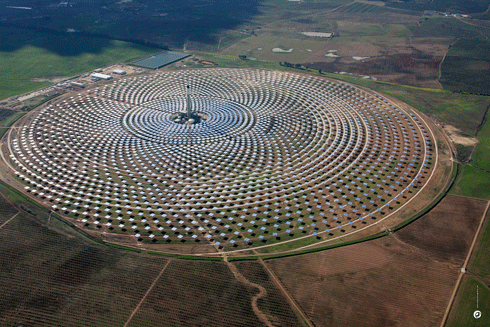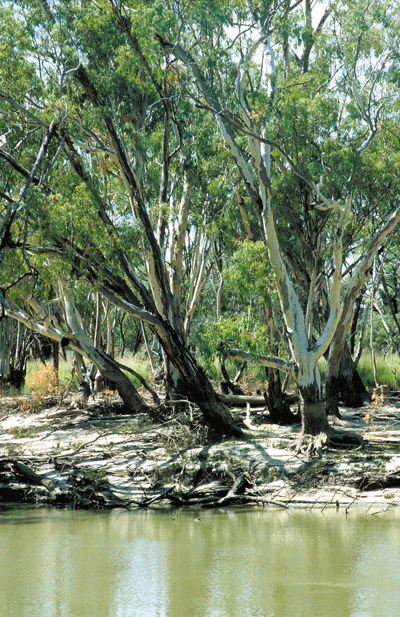Published: 9 March 2011
Zero Carbon Australia plan, revisited
Matthew Wright
and Patrick Hearps
In 2010 the Beyond Zero Emissions group released a report with the University of Melbourne’s Energy Research Institute claiming that Australia could be powered by renewable energy sources by 2020. Here its lead authors reply to some of the points raised by Dr Mark Diesendorf’s review of the report in ECOS 157.

|
|
This Gemasolar CST plant in Seville, Spain, is despatching electricity to the Spanish grid. Credit: Torresol Energy/SENER
|
The Zero Carbon Australia (ZCA) Stationary Energy Plan sets out strategies for powering Australia with 100 per cent renewable energy by 2020. While the plan stands alone as the only technical blueprint for completely decarbonising the domestic energy sector, it is a work in progress. There are areas to improve and some clarifications we would like to make about some of the recommendations.
Our research was undertaken with two explicit parameters: energy technologies selected had to be both commercially available and from carbon-free renewable energy sources. This explains why the ZCA Plan identifies a 60/40 mix of concentrated solar thermal (CST) power and large-scale wind developments as the backbone of a decarbonised energy system. Together with existing hydropower, investment in CST with molten salt storage, backup from a small percentage of biomass power, an upgraded electricity grid, and comprehensive energy efficiency measures, Australia can reliably meet its energy needs from renewable electricity generation. The technologies selected were not preordained; rather they were chosen on the basis that they worked within ZCA’s parameters.
The ZCA scenario also includes natural gas. Under the plan, Australia would use existing gas infrastructure in a staged scale-back, until the last gas power plants are mothballed in 2020. The most carbon-intensive coal power plants must be first to be decommissioned as large-scale renewables come online, made possible by the deployment of CST power towers with molten salt storage for 24-h operation.
CST is a nascent, commercially available energy technology. At November 2010, there were 632.4 electrical megawatts (MWe) of CST operating in Spain, including 250 MWe with storage, and a further 422 MWe in the US. Another 2000 MWe are in advanced stages of construction and development in Spain. This project pipeline amounts to over a US$20 billion investment. Meanwhile, in the US, federal loan guarantees and cash grants have fostered the approval of over 4 000 MW of CST, many of which have begun construction.
The CST plants in the ZCA Plan are modelled on the Spanish Gemasolar plant, which is now dispatching electricity to the Spanish grid. Our cost projections are based on those from existing projects in the US and Spain, with provisions for significant cost reductions following the first 1000 MWe installed.
The infrastructure rollout proposed under the ZCA plan, including these CST plants, is well within Australia’s industrial capability. Dr Diesendorf presents a global shortage of electrical engineers as a constraining factor. However, CST plants constructed under the ZCA plan would be replicated with a standardised series of plants, reducing the need for electrical engineers who are mostly required during the design phase.
As to the value of an east–west transmission link, more detailed modelling will be conducted for version 2.0 of the ZCA plan. Even without this data, it is premature to rule out the cost effectiveness of a transcontinental grid. Siemens proposes an east–west link in its 2010 report Picture the Future: Australia – Energy and Water. High-voltage direct current (HDVC) infrastructure is already in widespread use in the US, Canada, Europe and South America, and China has now commissioned the 2071 km Xiangjiaba-Shanghai 800 kV Ultra HVDC link.
The ZCA plan puts forward a single scenario largely in order to identify the specific challenges around implementation. We do not claim that the current iteration of the ZCA plan is the optimal solution. We would like to invite engineers and scientists from around Australia to provide their services as pro bono researchers with the Zero Carbon Australia project and make version 2.0 an even stronger document than the first.
We don’t think the Zero Carbon Australia initiative is brave. We think it’s necessary.
Matthew Wright and Patrick Hearps are lead authors of the Zero Carbon Australia Stationary Energy Plan. Matthew Wright is Executive Director of Beyond Zero Emissions and the 2010 Environment Minister’s Young Environmentalist of the Year. Patrick Hearps is a research fellow at the University of Melbourne’s Energy Research Institute.
More information





